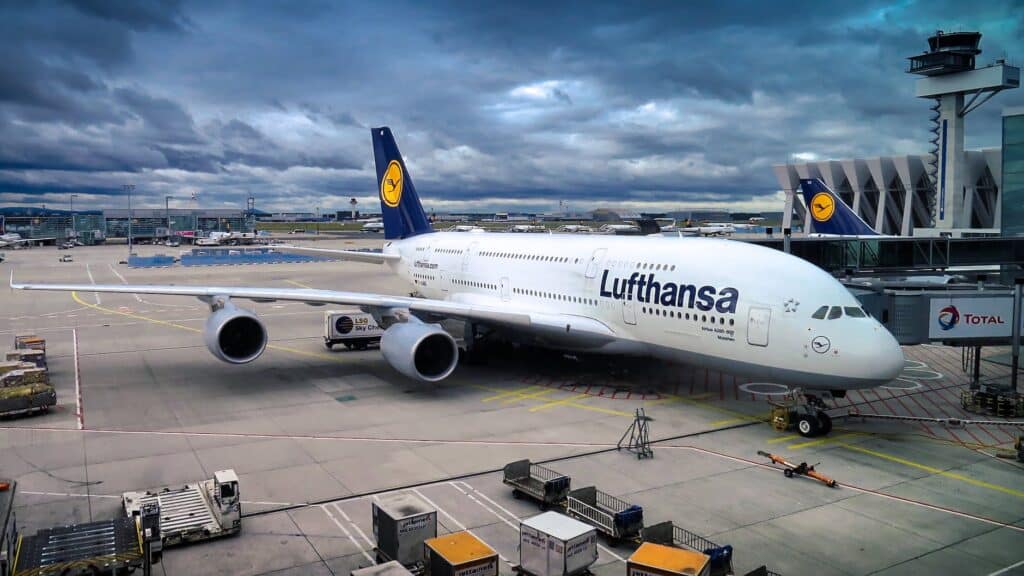2023 Airline Pilot pay: Ultimate Best Comprehensive Salary Guide

2023 Airline Pilot pay guide
Airline pilots are responsible for navigating aircraft safely and efficiently, transporting passengers and cargo from one destination to another. Their compensation is an essential factor for many aspiring pilots considering a career in aviation. This comprehensive guide will examine various aspects of airline pilot compensation, including factors affecting their earnings, how their salaries are calculated, and benefits they receive. It will also explore trends in pilot wages, the impact of the ongoing pilot shortage, and steps pilots can take to increase their earnings.
Factors Affecting 2023 Airline Pilot Pay
Pilot earnings are influenced by a range of variables, such as the type of airline, aircraft, route, pilot rank, and experience. Other factors include the pilot’s union agreements, geographical location, and even the economic climate. In this section, we will discuss these different variables and their impact on pilot compensation.
Type of Airline and Pay
Pilot salaries vary significantly between different airlines. Major carriers typically pay more than regional airlines or low-cost carriers, as they generally have larger aircraft, longer routes, and more established operations. However, with the growing demand for pilots, regional airlines are becoming more competitive in their compensation packages.
Aircraft Type and Route
The size and complexity of the aircraft a pilot flies play a significant role in determining their earnings. Pilots operating larger, long-haul aircraft like the Boeing 747 or Airbus A380 are generally paid more than those flying smaller, regional jets. Similarly, pilots flying international routes or challenging routes that require additional training and expertise can expect higher compensation.
Pilot Rank and Experience
A pilot’s rank, such as captain or first officer, is directly related to their experience and responsibilities. Captains, who have the most extensive experience and hold the highest authority on board, are paid more than first officers, who serve as second-in-command. Moreover, as pilots gain more experience and seniority within the airline, their earnings typically increase.
Union Agreements
Many airline pilots are members of labor unions, which negotiate contracts and agreements on their behalf. These agreements often include provisions for salary increases, benefits, and work rules. As a result, pilots working for airlines with strong union representation may receive higher compensation than those at non-unionized carriers.
Geographical Location
Pilot compensation can also be affected by the cost of living and economic conditions in the region where they are based. For example, pilots working in major metropolitan areas with a high cost of living may receive higher salaries than those based in smaller, more rural locations.
How Airline Pilot Salaries Are Calculated
Airline pilots are typically paid on an hourly basis for the actual hours flown, rather than receiving a fixed annual salary. The Federal Aviation Administration (FAA) mandates that airline pilots fly no more than 1,000 hours per year to ensure they remain well-rested and focused on their duties. In this section, we will explore the various elements that go into calculating a pilot’s salary.
Hourly Rate
A pilot’s hourly rate is determined by factors such as their rank, experience, and the type of aircraft they operate. Hourly rates generally increase as pilots gain more experience within the airline and as they transition to larger, more complex aircraft.
Annual Hours Flown
The number of hours flown by a pilot in a given year directly impacts their total compensation. While FAA regulations limit pilots to 1,000 hours per year, many airlines guarantee a minimum number of monthly or daily hours to ensure a stable income for their pilots.
Overtime and Additional Pay
Pilots may have the opportunity to earn additional income through overtime, working on their days off, or taking on extra flights. Overtime rates can range from 100-300% of a pilot’s standard hourly rate, depending on the airline’s policies and demand for pilots.
Benefits and Perks for Airline Pilots
In addition to their base salary, airline pilots often receive a range of benefits and perks. These can include health, dental, and vision insurance, retirement plans, paid vacation, and sick leave. Some airlines also offer per diem allowances for food and other expenses while on duty. Other benefits may include free or discounted air travel for pilots and their families, as well as opportunities to explore new destinations during layovers.
Trends in Airline Pilot Wages
Pilot wages have been on the rise over the past decade, driven by factors such as the ongoing pilot shortage and increased demand for air travel. The U.S. Bureau of Labor Statistics reports that the median annual pilot salary in the United States has increased from 211,790 in 2022. This upward trend is expected to continue as airlines compete to attract and retain pilots.
Pilot Salary Florida
Pilot Salary in Florida is based upon the home base of the airline pilots. Florida has some major hubs for airline pilots such as Orlando, Miami, Jacksonville, Daytona Beach, Tampa and Ft. Lauderdale. Florida Pilot Salary is similar to the national average pilot salary.
FAA Part 135 Airlines – First Officer pilot wage
| Name of Airline | Pilot Pay First Year | Pilot Pay Second Year | Year published |
|---|---|---|---|
| Cape Air | $27,199 | $41,399 | 2023 |
| Volato | $79,116 | $91,279 | 2023 |
| Boutique Air | $67,133 | $68,122 | 2023 |
| Martinair Aviation | $35,617 | $37,211 | 2023 |
| ACI Jet | $51,422 | $52,717 | 2023 |
| Speedbird | $52,924 | $57,329 | 2023 |
| Wheels Up | $49,224 | $55,422 | 2023 |
| Fly Exclusive | $42,316 | $51,229 | 2023 |
FAA Part 135 Airlines – Captain Wages
| Name of Airline | Pilot Pay First Year | Pilot Pay Second Year | Year published |
|---|---|---|---|
| Cape Air | $80,611 | $89,409 | 2023 |
| Volato | $126,701 | $149,244 | 2023 |
| Boutique Air | $82,311 | $84,754 | 2023 |
| Martinair Aviation | $62,827 | $69,344 | 2023 |
| ACI Jet | $89,644 | $91,985 | 2023 |
| Speedbird | $87,321 | $91,144 | 2023 |
| Wheels Up | $119,623 | $129,417 | 2023 |
| Fly Exclusive | $104,233 | $115,124 | 2023 |
Regional Airlines – First Officer wage
| Name of Airline | Pilot Pay First Year | Pilot Pay Second Year | Year published |
|---|---|---|---|
| Mesa Airlines | $100,114 | $123,211 | 2023 |
| Envoy Air | $93,514 | $99,854 | 2023 |
| GoJet | $92,054 | $101,982 | 2023 |
| Endeavour Air | $91,505 | $110,241 | 2023 |
| Piedmont | $89,151 | $99,621 | 2023 |
| Republic Airways | $82,101 | $89,744 | 2023 |
| SkyWest Airlines | $84,247 | $89,524 | 2023 |
Regional Airlines – Captain wages
| Name of Airline | Pilot Pay First Year | Pilot Pay Second Year | Year published |
|---|---|---|---|
| Mesa Airlines | $147,919 | $152,401 | 2023 |
| Envoy Air | $137,014 | $142,716 | 2023 |
| GoJet | $121,114 | $139,424 | 2023 |
| Endeavour Air | $121,740 | $124,641 | 2023 |
| Piedmont | $129,551 | $137,211 | 2023 |
| Republic Airways | $117,141 | $121,741 | 2023 |
| SkyWest Airlines | $131,704 | $142,271 | 2023 |
Major Airlines – First Officer wages
| Name of Airline | Pilot Pay First Year | Pilot Pay Second Year | Year published |
|---|---|---|---|
| United Airlines | $106,241 | $139,827 | 2023 |
| Delta Airlines | $111,324 | $174,321 | 2023 |
| American Airlines | $109,324 | $172,624 | 2023 |
| Southwest Airlines | $104,241 | $157,422 | 2023 |
| FedEx | $99,422 | $157,541 | 2023 |
| UPS | $89,324 | $147,322 | 2023 |
Major Airlines – Captain Wages
| Name of Airline | Pilot Pay First Year | Pilot Pay Second Year | Year published |
|---|---|---|---|
| United Airlines | $194,319 | $212,644 | 2023 |
| Delta Airlines | $192,440 | $244,127 | 2023 |
| American Airlines | $189,644 | $222,416 | 2023 |
| Southwest Airlines | $252,381 | $279,071 | 2023 |
| FedEx | $241,633 | $252,647 | 2023 |
| UPS | $277,923 | $292,109 | 2023 |
The Impact of the Pilot Shortage on Airline Pilot Compensation
The ongoing pilot shortage has created a highly competitive job market for qualified pilots, leading to increased wages and signing bonuses. Regional airlines, in particular, have been offering generous compensation packages to attract pilots and fill their ranks. These include signing bonuses ranging from 100,000, as well as improved benefits and working conditions.
Steps to Increase Airline Pilot Earnings
There are several steps pilots can take to maximize their earning potential:
- Become a skilled pilot: Focus on maintaining a high level of proficiency, safety, and professionalism in your flying. This will make you more valuable to your airline and can lead to higher pay and promotions.
- Choose the right airline and aircraft: Research different airlines and their compensation packages to find the best fit for your career goals. Consider factors such as the size and type of aircraft, routes flown, and seniority systems when making your decision.
- Gain experience and seniority: As you accumulate flight hours and experience, your earning potential will increase. Seek opportunities to progress in your career, such as upgrading to captain or transitioning to larger, more complex aircraft.
- Network and negotiate: Building strong connections within the industry and your airline can open doors to new opportunities and better compensation packages. Be prepared to negotiate your salary, benefits, and working conditions when the opportunity arises.
- Stay informed about industry trends: Keep abreast of changes in the aviation industry, such as new technology, regulations, and economic factors that may impact pilot compensation. This knowledge can help you make informed decisions about your career and earning potential.
Conclusion
2023 Airline pilot pay is a complex and multifaceted topic, with many factors influencing a pilot’s earnings. By understanding the different elements that contribute to pilot compensation, aspiring pilots can make informed decisions about their career paths and maximize their earning potential. With the ongoing pilot shortage and increasing demand for air travel, pilots can expect a rewarding and well-compensated career in the years to come.
Contact us or call the Florida Flyers Admissions Team at +1 904 209 3510



